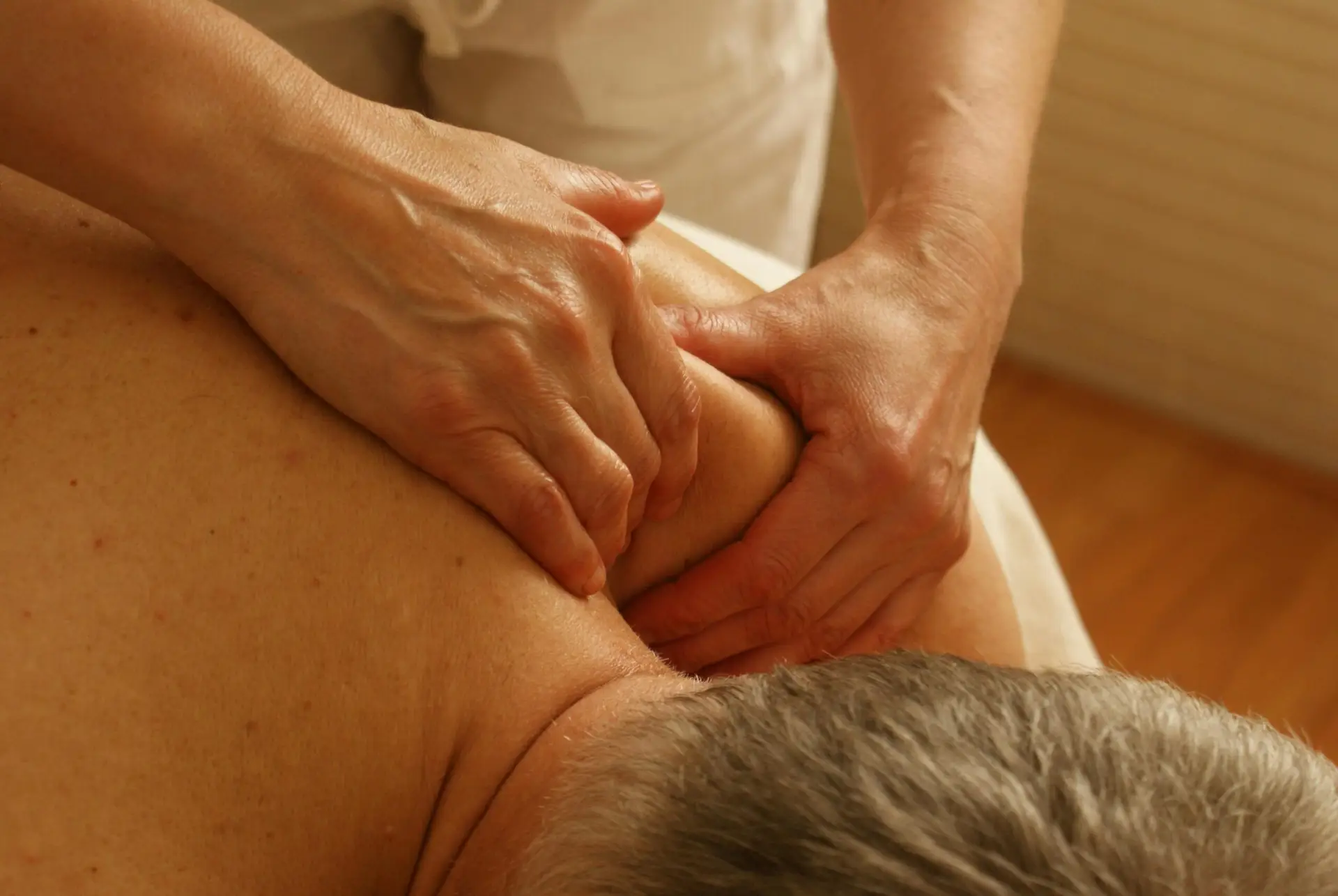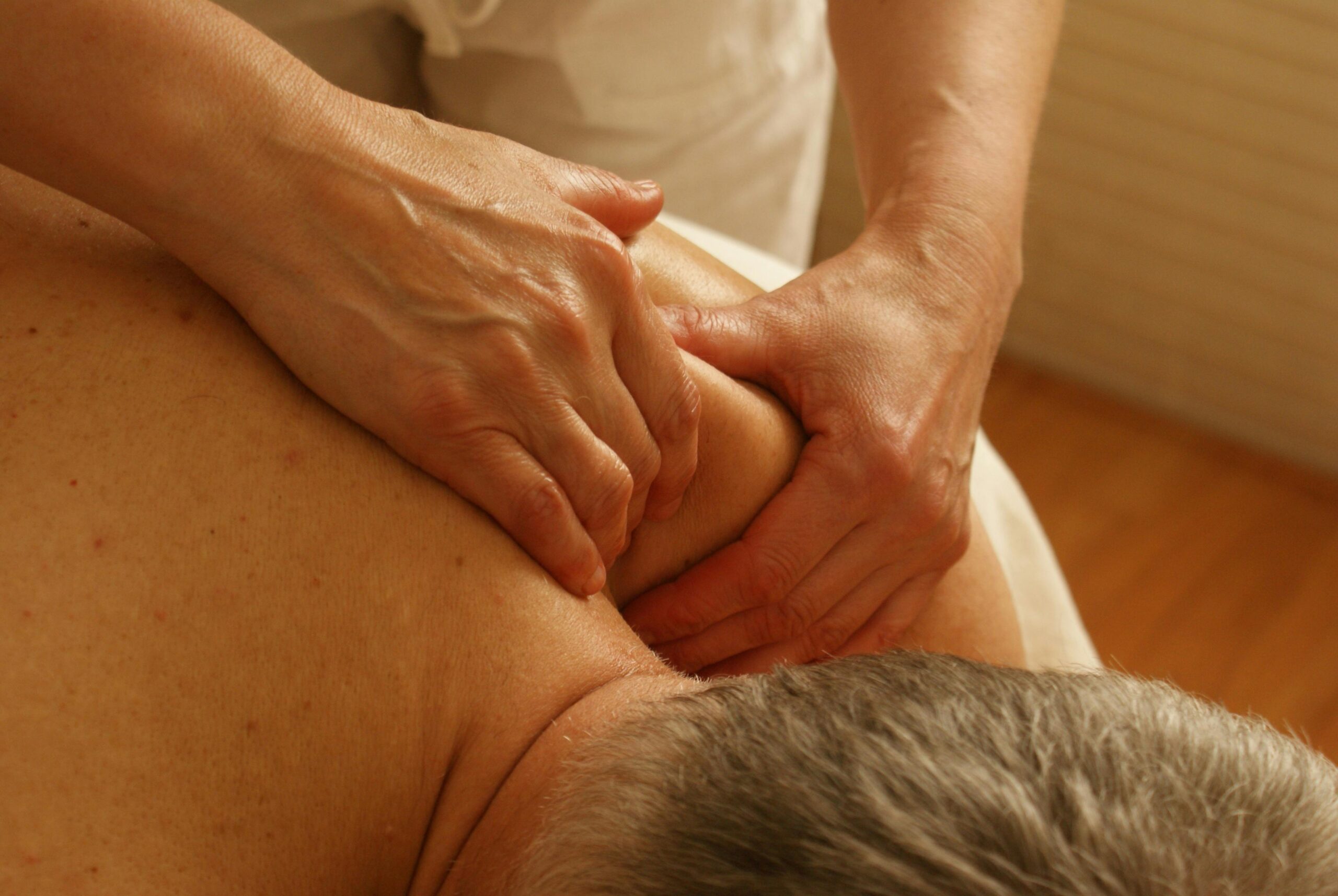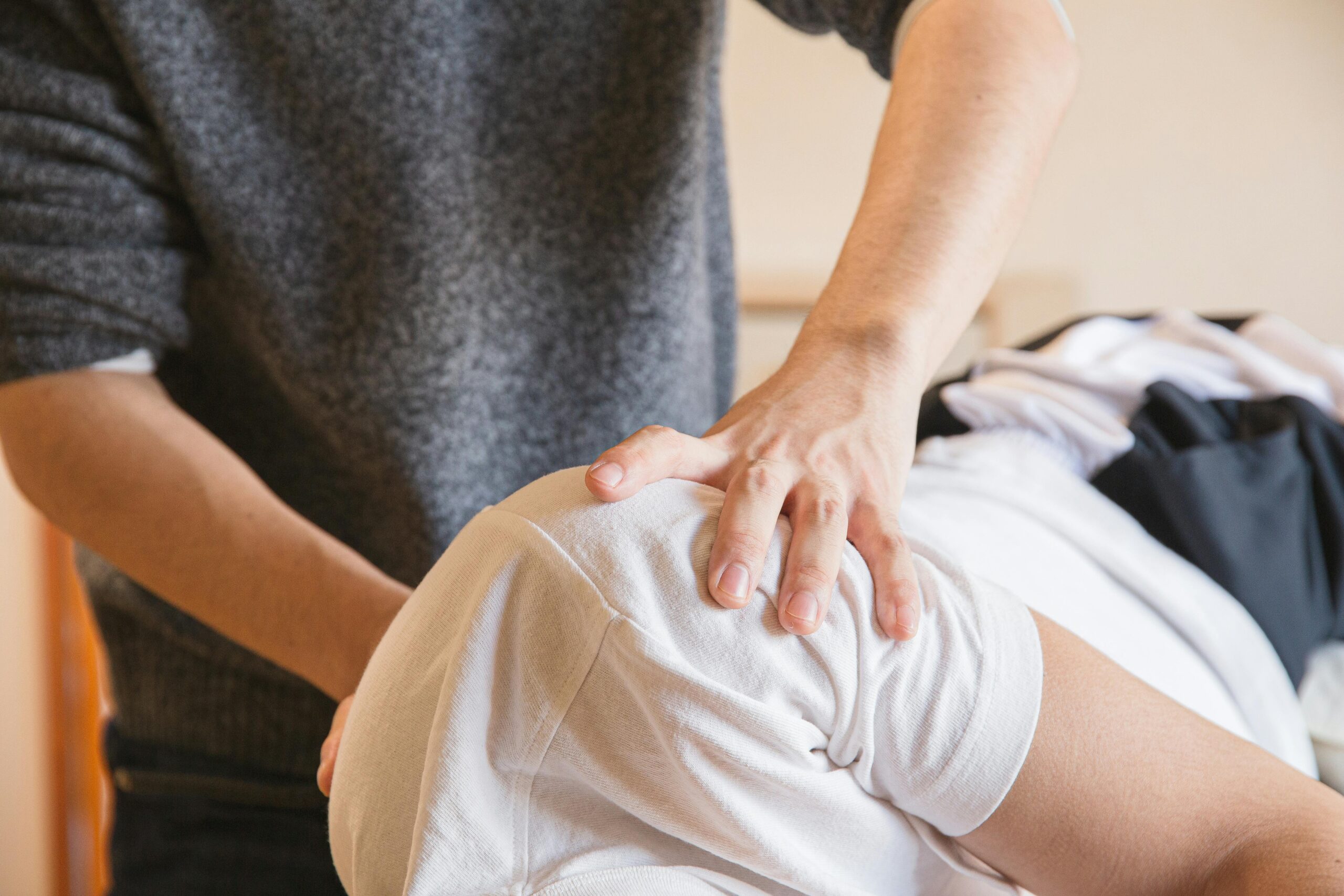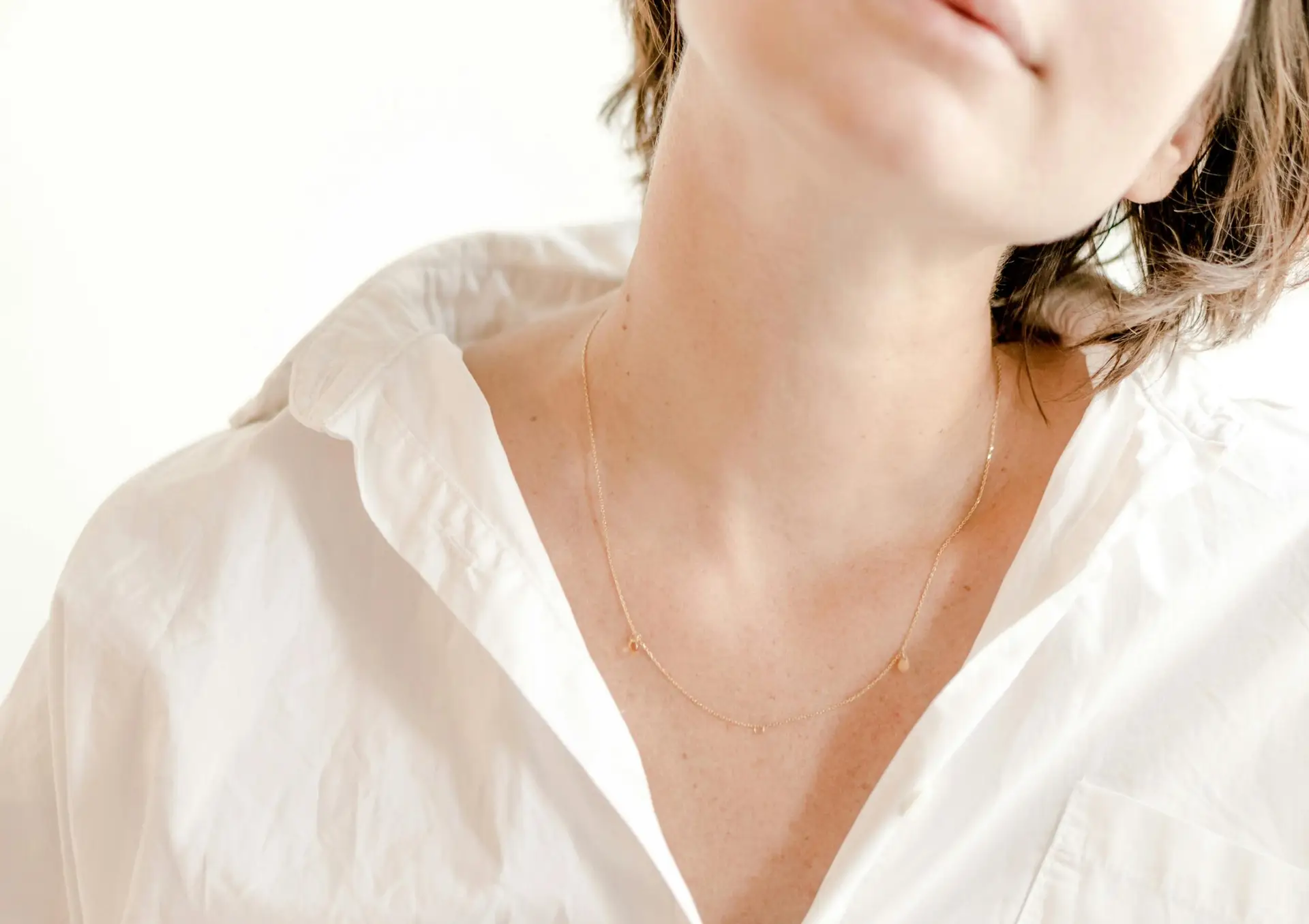
Resolve a Neck Kink: Waking up with a sore, stubborn “kink” in your neck can derail your day before it even begins. Turning to check your blind spot hurts, glancing down at your phone pinches, and lying down at night becomes a negotiation between pillow angles and pain levels. Most people treat a neck kink like a random nuisance, but the body rarely throws discomfort at you “just because.” In many cases, that recurring kink is your nervous system asking for help—specifically, for better alignment at the very top of your spine.
At Lavender Family Chiropractic in Sarasota, Florida, our three-doctor team—Dr. Rusty Lavender, Dr. Jacob Temple, and Dr. Will Guzinski—focuses on upper cervical chiropractic, a gentle, precise, and highly targeted approach that restores balance to the atlas (C1) and axis (C2). Using 3D CBCT imaging and functional nervous system scans (Tytron paraspinal infrared thermography), we identify subtle misalignments that standard evaluations often miss. Our goal isn’t to mask pain; it’s to correct the root cause so your body can heal, stabilize, and stay well—without the popping, twisting, or cracking you might associate with traditional chiropractic.
If you’ve been searching “chiropractor Sarasota Florida,” “chiropractor near me,” “upper cervical chiropractor near me,” “Vertigo doctor near me,” or “Migraine doctor near me” because neck pain, headaches, dizziness, or a stubborn neck kink just won’t quit, this guide will show you why upper cervical care is often the missing link—especially for lasting, drug-free relief.
Resolve a Neck Kink: What Is a “Neck Kink,” Really?
A “kink” is the everyday term patients use to describe sharp stiffness, tightness, or restricted motion on one side of the neck. It might feel like a knot deep under the skull, a pulling sensation when you rotate, or a painful catch turning to one side. While it often shows up first thing in the morning or after a long drive, a kink can also arrive after a workout, a stressful day, or a simple head turn that seemed totally harmless.
Common features of a neck kink include:
- Difficulty turning your head equally left and right
- A sharp, pinching sensation when you check your blind spot
- Tightness climbing up toward the base of the skull
- Shoulder blade discomfort on the same side
- Headaches that follow the stiffness
- A sense that no amount of stretching “releases” the right spot
Here’s the key: most kinks are not random and not purely muscular. Recurrent kinks frequently reflect upper cervical misalignment—a subtle but significant shift of the atlas or axis that distorts muscle tone, joint loading, and nerve input around the neck and shoulders.
Meet the Upper Cervical Spine: Atlas (C1) and Axis (C2)
The atlas and axis are unique. They don’t have discs like the rest of your spine. Instead, they rely on precision engineering—curved joint surfaces, strong ligaments, and finely tuned muscle control—to allow your head to nod, tilt, and rotate freely. This design grants extraordinary mobility, but it also means small misalignments can have big effects.
When the atlas or axis drifts off its ideal center, even by millimeters or degrees, the consequences can cascade:
- Muscle Guarding and Spasm: Your body recruits muscles (suboccipitals, levator scapulae, scalenes, upper traps) to protect the area. That guarding is the “knot” you feel.
- Joint Irritation: Facet joints can become irritated when motion is asymmetrical, leading to sharp pain on certain movements.
- Nerve Irritation: The cervical nerves carry sensory and motor information to the neck, shoulders, and arms. Irritation can create pain, tingling, or altered muscle tone.
- Postural Distortion: The rest of the spine compensates for upper cervical imbalance, potentially stressing the mid-back and low back.
- Autonomic and Blood Flow Considerations: The atlas surrounds the brainstem area. Misalignment can influence functional neurology, muscle tone regulation, and even cerebrospinal fluid (CSF) and venous dynamics.
Bottom line: if you keep treating the muscle tightness without correcting the upper cervical foundation, relief is usually short-lived.
Why Kinks Keep Coming Back: Triggers + Hidden Patterns
People often blame the last thing they did—“I slept weird,” or “I twisted too fast”—but the trigger isn’t always the cause. Consider these common contributors that set the stage long before the kink shows up:
1) Sleep Posture + Pillows
Sleeping with the neck in side-bent or rotated positions, or using a pillow that’s too tall/flat for your frame, can stress the upper cervical joints. The kink shows up when you wake, but the misalignment likely developed earlier.
2) “Tech Neck” and Forward Head Carriage
Hours of phone/computer use can push the head forward and down, loading the suboccipital region and shortening key muscles. Over time, the atlas can shift subtly; a simple head turn later can trigger the kink.
3) Micro-Traumas + Old Whiplash
Minor fender-benders, sports impacts, or old injuries may leave the ligaments around C1/C2 lax. The body compensates until one day it doesn’t.
4) TMJ and Bite Imbalances
Jaw tension changes head posture and upper neck muscle tone. Atlas misalignment and TMJ issues often co-exist, creating a loop of tension and guarding.
5) Asymmetric Daily Habits
Cradling a phone on one side, carrying bags on one shoulder, nursing or holding a child on the same hip—repetition drives asymmetry.
6) Stress and Breath Mechanics
Stress elevates shoulders, alters breathing (more chest, less diaphragm), and feeds neck tension via the autonomic nervous system.
7) Training Errors
Overhead lifts with compromised form, aggressive cycling posture, or exaggerated shrug work can overload the cervicothoracic junction and upper cervical complex.
The good news: when you restore upper cervical alignment, these triggers become less inflammatory because the system is balanced and resilient.
Why Common “Quick Fixes” Don’t Last
Heat, stretching, massage, and foam rolling can feel amazing. We use and recommend targeted soft-tissue support as part of an overall plan. But if you’ve noticed relief that fades, here’s why:
- Stretching pulls on tight muscles that are guarding a deeper misalignment. You may get temporary range of motion, but the brain and ligaments re-tighten to protect the unstable segment.
- Massage eases tone temporarily but can’t realign the atlas/axis. Without structural correction, the old pattern returns.
- Medications dull signals but don’t change joint mechanics or nervous system function.
- Traditional high-velocity adjustments (popping/twisting/cracking) may help some people, but subtle upper cervical misalignments often require more precision than global moves provide.
For persistent or recurring neck kinks, the missing link is usually precise, gentle upper cervical correction that your body can hold.
Upper Cervical Chiropractic: Gentle, Precise, and Measurable
Upper cervical chiropractic focuses on the exact alignment of C1 and C2. Instead of “chasing pain,” we analyze how the head sits on the neck and how the neck stacks over the body. Our aim is to correct, stabilize, and help you hold the alignment—not to constantly re-adjust the same segment.
What makes our approach different at Lavender Family Chiropractic:
• 3D CBCT Imaging
With cone beam CT, we capture a high-resolution, three-dimensional view of your upper cervical anatomy. We can see the exact vector (direction, degree, and rotation) of misalignment—clarity you just don’t get from a single plane X-ray.
• Tytron Functional Nervous System Scans
We use paraspinal infrared thermography to map heat asymmetries associated with nerve irritation. These scans provide objective before-and-after data, so you can see your nervous system calming as you heal.
• Gentle, Specific Corrections (No Popping or Twisting)
Our corrections are precise and light. Patients are often surprised by how minimal the contact feels—and how profound the relief is. The goal is to use the least force necessary to produce the greatest change.
• Hold > Adjust
We celebrate when you hold your correction because holding equals healing. The longer you hold, the faster your muscles retrain and the more resilient your neck becomes. Fewer adjustments over time; more days living your life.
The Lavender Family Chiropractic Process: What to Expect
1) Comprehensive Consultation and History
We listen. We want the full story—first kink, worst flare, prior injuries, stress load, desk setup, pillows, training. Patterns matter.
2) Functional Testing + Tytron Scan
We evaluate posture, range of motion, muscle tone, and neurological indicators. The Tytron scan gives us objective data points about nervous system imbalance.
3) 3D CBCT Imaging of the Upper Cervical Complex
This is where the map appears. We measure your exact misalignment vector and plan a correction tailored to your anatomy.
4) Your First Upper Cervical Correction
The correction itself is gentle and targeted. Many patients describe a deep sense of release followed by warmth or lightness across the shoulders.
5) Post-Correction Checks
We re-scan with Tytron and re-check posture and motion to confirm objective change. You’ll often feel an immediate difference in range and ease.
6) Rest + Stabilization Period
We may have you rest after the correction to allow ligaments and soft tissues to adapt, like setting fresh concrete.
7) A Structured Care Plan
The early phase focuses on stability—helping you hold the correction. As you progress, visit frequency typically decreases, and we add simple at-home strategies to reinforce alignment.
When Is a Kink “More Than a Kink”? Red Flags to Know
Most neck kinks are musculoskeletal and improve with proper care. However, seek urgent evaluation if you notice any of the following:
- Severe trauma (car crash, significant fall)
- Progressive weakness, numbness, or loss of coordination in arms/hands
- Fever + neck stiffness (concern for infection)
- Sudden, severe headache unlike any before
- Neurological symptoms like facial droop, slurred speech, or vision loss
If you’re unsure, call us. We’ll help you determine the appropriate next step.
Self-Care That Supports Upper Cervical Alignment (Between Visits)
Ergonomics:
- Keep screens at eye level; bring the world up to your eyes, not your head down to the world.
- Use a chair that supports your mid-back; place feet flat on the floor.
- Consider an external keyboard and mouse to reduce shoulder hunching.
Micro-Breaks:
- Every 30–45 minutes, stand up, roll your shoulders, and gently look far away to relax eye muscles.
- Walk for 2–5 minutes each hour if possible.
Pillow + Sleep:
- Choose a pillow height that keeps your head level (not side-bent). Side sleepers need enough loft to fill the shoulder gap; back sleepers need less.
- Avoid stomach sleeping—it forces rotation and jams the upper cervical region.
Breathing + Stress:
- Practice slow nasal breathing with longer exhales. Box breathing (4-4-4-4) can calm neck tone via the parasympathetic system.
- Gentle “neck-friendly” mobility: think lengthening (chin lightly toward throat, crown tall), not cranking.
Smart Movement:
- Prioritize walking, light rowing, and scapular stability work (depress and set shoulder blades) without shrugging.
- If you lift, keep the neck neutral; let the hips and thoracic spine share the load.
These strategies aren’t meant to replace care; they help you hold your correction longer and reduce flare-ups.
Special Considerations by Lifestyle
Desk Workers
Set timers for posture resets, keep water nearby, and rotate tasks to avoid marathon typing sessions. Consider a sit-stand desk with frequent position changes.
Athletes + Lifters
Technique matters more than load. Maintain neck neutrality during squats, presses, and Olympic lifts. Build posterior chain and mid-back endurance to protect the neck.
Parents + Caregivers
Switch hips when holding a child; alternate carrying arms; consider babywearing options that keep weight centered.
Healthcare + Service Pros
If you stand long hours, keep weight centered and avoid prolonged head-down positions. Use supportive shoes and consider a soft cervical “lengthening” cue during tasks.
Students
Elevate laptops, use bookstands, and schedule “movement sprints” between study blocks. Blue light filters can reduce eye strain that feeds forward-head posture.
How Long Until a Kink Resolves? What Does Healing Look Like?
Healing timelines vary. Some feel immediate relief after the first correction; others progress steadily over several weeks as the body relearns neutral alignment. Key insights:
- Holding Is Healing: The longer you hold your correction, the faster your muscles recalibrate.
- Fewer Adjustments Over Time: We don’t want to adjust you forever; we want you to need fewer adjustments because you’re stable.
- Flare-Ups Happen: Life happens—long flights, stress, a tough week. With an established upper cervical baseline, flare-ups are typically milder and shorter.
Our patients often report not just less neck pain, but improved headaches/migraines, better sleep, fewer vertigo/dizziness episodes, and a general sense of ease in posture.
Who We Help (Beyond “Kinks”)
Because the upper cervical spine influences the whole system, patients who seek us out for a neck kink frequently mention other concerns that also improve as alignment stabilizes:
- Headaches & Migraines (including vestibular and tension-type)
- Vertigo & Dizziness (BPPV, vestibular migraine, MdDS-like symptoms)
- TMJ/Jaw Pain
- Shoulder/Arm Tingling or Numbness
- Occipital Neuralgia, Trigeminal Neuralgia (co-management as indicated)
- Neck Straightening/Hypolordosis
- Post-Concussion Symptoms
- Low Back Pain related to postural compensation
If it’s part of your story, tell us. We’ll take it into account as we craft your plan.
Why Choose Lavender Family Chiropractic in Sarasota
- Upper Cervical Focus: We devote our entire clinical process to the atlas/axis and their impact on your nervous system.
- Advanced Imaging: 3D CBCT helps us see and measure what others miss.
- Objective Scans: Tytron thermography tracks nervous system changes over time.
- Gentle, Precise Care: No popping, twisting, or cracking—ever.
- Three-Doctor Team: Dr. Rusty Lavender, Dr. Jacob Temple, Dr. Will Guzinski—collaborative eyes on unique cases.
- Community Trust: 120+ five-star reviews from Sarasota, Lakewood Ranch, Bradenton, and beyond.
- Results That Hold: Our philosophy is stability, not perpetual adjusting.
Service Areas We Proudly Serve
We’re located on the Sarasota/Manatee line and routinely care for people from Sarasota, Bradenton, Lakewood Ranch, Parrish, Ellenton, Venice, Osprey, Punta Gorda, St. Petersburg, Siesta Key, Longboat Key, Lido Key, and Myakka City. If you’re driving in, we’ll do our best to coordinate visits efficiently.
Three Illustrative Scenarios (Composite Patient Stories)
1) The Morning-After Kink
A 38-year-old wakes with a sharp right-sided kink after a stressful week. Massage helps but the kink returns. CBCT reveals a right-sided atlas rotation with slight tilt. After a gentle correction and rest, she notices easier rotation, fewer headaches, and the kink doesn’t return with normal sleep.
2) The Desk-Athlete
A 29-year-old software engineer who lifts weights gets periodic left-sided kinks after heavy overhead days. Tytron shows repeatable thermal asymmetry; CBCT maps a left atlas shift. We correct the upper cervical complex, refine lifting technique (neck neutral, scapular setting), and his “kink cycle” breaks.
3) The Old Whiplash
A 54-year-old with a fender-bender history gets seasonal neck kinks with migraines. Imaging reveals a longstanding misalignment. With a series of precise corrections and a strong emphasis on holding, her kinks stop recurring, and migraine frequency drops significantly.
(These are composites for educational purposes; individual results vary. We co-manage and refer as clinically indicated.)
Top 15 FAQs About Neck Kinks & Upper Cervical Care
1) What actually causes a neck kink?
Most kinks are a protective response to upper cervical misalignment. Muscles tighten to guard unstable joints, creating that sharp, restricted feeling.
2) Why does my kink keep coming back on the same side?
Because the underlying misalignment pattern hasn’t been corrected. The body returns to its default protection strategy until the atlas/axis are restored.
3) Will upper cervical chiropractic help if I’ve tried massage, PT, or medications?
Yes—those approaches focus on symptoms or surrounding tissues. Upper cervical care addresses the root alignment, so your body can respond better to supportive therapies.
4) Is the adjustment safe? Does it hurt?
The correction is gentle and precise—no twisting or cracking. Most patients find it comfortable and even relaxing.
5) How quickly will I feel relief?
Some feel easier motion immediately; others notice steady change over several visits as the body stabilizes. Our focus is helping you hold corrections for lasting results.
6) How many visits will I need?
Every case is unique. We’ll outline a plan after your evaluation. Typically, visit frequency decreases as you stabilize and hold.
7) Do you pop or crack the neck?
No. Our technique uses light, specific corrections designed for the upper cervical spine.
8) What testing do you use?
3D CBCT imaging for structural clarity and Tytron paraspinal infrared thermography to track nervous system changes.
9) I also get headaches or migraines—will this help?
Many patients report improvement in headaches/migraines as upper cervical alignment calms nerve irritation and muscle guarding. Individual results vary.
10) Do you adjust kids and seniors?
Yes. The approach is gentle and can be tailored to any age.
11) What if I’ve had a previous neck injury or whiplash?
That’s exactly when precision matters. We’ll evaluate with CBCT and correct based on your unique vector.
12) Can a neck kink cause dizziness or ear pressure?
Upper cervical issues can influence balance and muscle tone around the head/neck; patients with kinks sometimes report dizziness, ear fullness, or eye strain that improve with alignment.
13) How long is the first visit?
Plan for 60–90 minutes to allow history, Tytron scans, CBCT imaging, analysis, and (if appropriate) your first correction.
14) Do you take insurance?
Our office is out of network with insurance. Many of our patients receive a superbill to submit to their insurance for reimbursement based on their coverage. We offer many different payment options as well as finance options.
15) Why choose Lavender Family Chiropractic if I’m closer to Bradenton or Lakewood Ranch?
We’re centrally located on the Sarasota/Manatee line and serve Bradenton and Lakewood Ranch daily. Patients travel to us because of our upper cervical focus, 3D CBCT imaging, Tytron scans, and gentle, precise corrections that help results hold.
How This Supports Local SEO (And Why That Matters to Patients)
People in pain don’t want to drive far or guess at solutions. By focusing on precise upper cervical chiropractic in Sarasota, Bradenton, and Lakewood Ranch, and including helpful search terms like chiropractor Sarasota Florida, upper cervical chiropractor near me, Vertigo doctor near me, and Migraine doctor near me, we help the right people find the right care quickly—especially if they’ve tried “everything” and still wake up with that same neck kink.
What Makes Our Corrections “Hold”?
Holding isn’t luck—it’s strategy:
- Vector-Specific Adjustments: We correct in the exact direction your imaging demands.
- Objective Feedback: Tytron scans confirm when your nervous system is calmer.
- Stabilization Habits: Simple ergonomic shifts, sleep tweaks, and breathing work reduce re-irritation.
- Progressive Spacing: As you hold, we space visits out, so your body learns to own the alignment.
When you hold, the kink cycle breaks. Muscles finally relax because they can, not because they were forced to.
A Patient Voice (Shared with Permission, Name Changed)
“I thought I just slept funny—again. The kink was on repeat for years. I’d stretch, get a massage, feel better for a day or two, and then… bam. Lavender Family Chiropractic found a specific atlas misalignment on my CBCT I’d never seen before. The first correction felt surprisingly light. My range returned the same day, and for the first time in forever I held that change for weeks. Two months in, no kinks.” — Kara L., Lakewood Ranch
Take the Next Step—Let’s Resolve the Kink at Its Source
If neck kinks are stealing your mornings, your workouts, or your patience, it’s time to fix the foundation. We’ll evaluate your upper cervical alignment with 3D CBCT and Tytron scans, correct gently and precisely, and help you hold so your body can do what it’s designed to do: heal.
Lavender Family Chiropractic in Sarasota Florida offers complimentary consultations to learn more about you. Click the link below!
https://intake.chirohd.com/new-patient-scheduling/724/lavender-family-chiropractic
Visit our Website!
To learn more about us go to http://www.chiropractorsarasotaflorida.com
We also service Bradenton, Parrish, Ellenton, Ruskin, Venice, Tampa, St. Pete, Osprey, Longboat, Lakewood Ranch, Myakka City.
If you are in Tampa, Fort Myers, or Salt Lake City, you can visit my other locations! NeckWise Upper Cervical. Visit, www.neckwise.com
If you are not local, visit www.uccnearme.com to find a doctor in your area.
Lavender Family Chiropractic
5899 Whitfield Ave Ste 107, Sarasota, FL 34243
Call: (941) 243-3729
Web: www.chiropractorsarasotaflorida.com
We proudly serve Sarasota, Bradenton, Lakewood Ranch, Parrish, Ellenton, Venice, Osprey, Punta Gorda, St. Petersburg, Siesta Key, Longboat Key, Lido Key, and Myakka City.
If you’re searching “chiropractor near me” or “upper cervical chiropractor near me,” and you’re ready for a precise, gentle approach that helps resolve rather than chase neck kinks, we’re here for you.
P.S. Want this post repurposed into a shorter 1,200-word Google Business Profile article and three social captions for Instagram/TikTok (@lavenderfamilysrq / @drrustylavender)? Say the word and I’ll draft them to match this message and boost local SEO.





